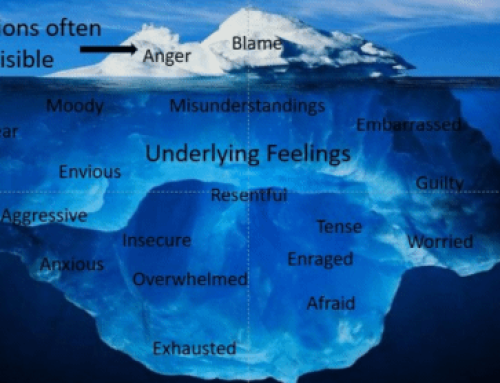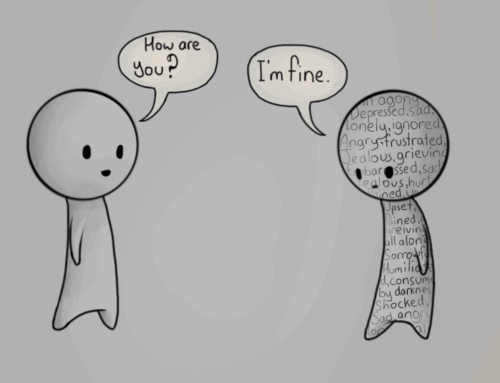The Emotion Shift
May 22, 2016
Categories: Emotion
Have you ever felt so much stress and anxiety that you became overwhelmed and couldn’t think straight? Maybe you had to give an important speech, or have a difficult conversation with a friend or colleague.
If you asked a friend for advice about what to do, they may have told you to calm down. This is a pretty common response. I’ve given myself this advice before. I remember one time I was getting ready to give a talk at a conference, and I was super nervous. I hadn’t given this talk before, and I was scared I was going to mess up or flub my words. I told myself to calm down and relax, but it didn’t work. It didn’t put a dent in my anxiety.
I recently read a research study by Alison Brooks that changed the way I’m thinking about helping people who experience anxiety or other troubling emotions. She brought participants into the lab, and had them engage in situations designed to make them nervous (e.g., singing competition, public speaking contest, math exam). She randomly assigned people into one of three conditions. Participants were instructed to tell themselves one of three things before completing their task: (1) keep calm, (2) get excited, or (3) no prompt.
Traditional wisdom would say that telling yourself to keep calm would result in the best performance, but that’s not what Brooks found. Instead, participants who told themselves to get excited did the best on the anxiety—provoking tasks.
How could that be? The explanation is that anxiety is a high-arousal emotion. When we feel anxious, our heart starts beating faster, our blood pressure increases, and we feel jumpy and tense. It’s tough to settle down. Telling ourselves to keep calm when we are in this state doesn’t really work. It’s like slamming on the brakes when you’re speeding down the highway. In fact, telling ourselves to calm down might even make us more anxious, because we see ourselves failing to settle down.
Excitement, on the other hand, is another high-arousal emotion. When we feel excited, we experience similar physiological reactions as when we feel anxiety, but there is a more positive framing to our emotion. Because the two emotions feel similar in our bodies, it’s easier to make the shift from anxious to excited.
I think this ‘emotion shift’ might be helpful for other types of difficult emotions as well. For example, take the emotion of sadness. When we feel sad, it’s a low-arousal emotion. Our bodies feel heavy, we slow down, and we’re in touch with our feelings in a deep way. Shifting from sad to happy might be too abrupt. It’s like trying to sprint a 100-yard dash when you’re still groggy and half asleep. Instead, what if you shifted your emotion from sad to tender? Focus on your feelings of tenderness, or deep connection with those closest to you. Physiologically, the emotions of sadness and tenderness are more similar, so it might be an easier shift.
Action Step: Next time you are struggling with anxiety, see if you can reframe your emotional experience as excitement. Next time you are struggling with sadness, see if you can reframe your emotional experience as tenderness. What was it like to ‘shift’ your emotion?
Related Thoughts
4 Comments
Leave A Comment

Subscribe To My Newsletter
Join my mailing list to receive the latest blog posts.
Receive my e-book “The Mental Health Toolkit” for free when you subscribe.






Great advice! Thanks for sharing.
Josh, this is a great article. Can you give examples of what you mean when you say be excited when you are feeling anxious? For instance, if I am going to speak in front of a large crowd and get nervous/anxious do I start telling myself I am excited to be alive today or I am excited about my upcoming trip to Disney World. Or, should it be more specific like I am excited I have the chance to speak to this crowd today…I hope they get some useful tips out of it..
Mark, in the research study itself, the instructions were general. Before doing the task, participants were just given instructions to ‘try to remain calm’ or ‘try to get excited.’ So I don’t have a direct answer from the research. But my initial thought would be to try to frame the task itself in a way that is exciting. For example, “I can’t wait to give this talk!” “I am going to rock this talk!” “What an awesome opportunity for me!” Etc.
[…] step forward. The psychologist Fritz Perls once said, “Fear is excitement without the breath.” Fear and excitement are both high arousal emotions—very close to one another in the brain. When we hold our breath, our tendency is to shrink back, […]